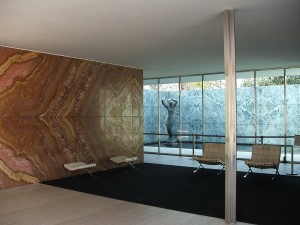2014-02-07: Another year, and here we go again ! Except this time around … the bullshit, hot air and ‘blah-blah-blah’ must end !! Certainly here, and at every other opportunity as well … I will demand to hear far less talk, but to see a lot more effective action on this important issue of human and social rights !!!
Just before Christmas (2013), I received a personal invitation to attend the Zero Project Conference on Accessibility for All, which will take place in a few weeks time on 27 & 28 February … at the United Nations Offices in Vienna (one of my favourite cities), Austria. You can read all the details about the conference here: http://zeroproject.org/conference/ The following is my polite and restrained reply to that invitation, dated 14 January 2014 …
.
RE: 2014 Zero Project Conference on Accessibility for All
To Whom It May Concern,
Thank you very much for your invitation to attend the upcoming Zero Project Conference on ‘Accessibility’ … but, having carefully examined the Draft Conference Programme, I must decline … and will not be attending.
Concerning Accessibility for All … the biggest problem within the European Accessibility Community is that we are all talk and no action. The shameful reality is that the Human Environment (including the social – built – virtual – economic environments) remains emphatically inaccessible throughout Europe and far beyond !
Even though the U.N. Convention on the Rights of Persons with Disabilities (CRPD) is in place, ratified by the European Union and many of the EU Member States … and International Standard ISO 21542: ‘Building Construction – Accessibility and Usability of the Built Environment’ has been fully adopted … the first conference session is still asking the basic question “What is Accessibility ?”
Instead of a detailed examination of how the elaborate Accessibility Agenda contained in Articles 9, 11 and 19 of the UN CRPD can be properly and satisfactorily implemented, in an independently monitored (Art. 33), harmonized and culturally-sensitive manner across the globe … you will be presenting an ‘Access’ Beauty Pageant. Istanbul, a beautiful city with which I am very familiar, is only at the earliest stages of awareness about accessibility … and the recently published Hong Kong Fire Safety Code completely ignores fire safety for building occupants with disabilities ! Ireland is determined to delay ratification of the UN CRPD for as long as possible, and will refuse to ratify the Convention’s Optional Protocol … and I also know that implementation of the CRPD is meeting stiff resistance within the Institutions of the European Union.
Sustainable Development and the Post-2015 Sustainable Development Goals (SDG’s) receive no attention in the Zero Project Conference Programme … even though it took a lot of effort to ensure that the innovative and forward-looking Preamble Paragraph (g) was incorporated in the Convention. Within the rapidly evolving SDG drafting process, it is still not properly understood why and how Accessibility for All is a fundamental attribute of a Sustainable and Resilient Human Environment.
Concerning Mainstreaming … I describe a typical ‘real’ situation on our Technical Blog ( www.cjwalsh.ie/2012/11/new-legal-normative-environment-for-accessibility-in-europe/ ) … but this constant annoying struggle, and discussion on finding common approaches to its successful resolution, are absent from the Programme.
For us, attendance at the 2014 Zero Project Conference would be a waste of scarce organization resources. For Europe, however, the Conference represents a much greater waste … a magnificent opportunity missed !
Regards,
C. J. Walsh, B Arch FRIAI MIBCI MIFS MIFireE – Consultant Architect, Fire Engineer & Technical Controller.
- Member, CIB Task Group 87: ‘Urban Resilience – Benchmarking & Metrics’.
- Member, CIB Working Commission 14: ‘Fire Safety’.
- Chair, CIB W14 Research Working Group IV: ‘Structural Reliability & Fire-Induced Progressive Damage’.
- Member, CIB Working Commission 108: ‘Climate Change & the Built Environment’.
- Member, EU Expert Working Group on Urban Environment Research.
- Member, EU EYPD Expert Group on Accessibility.
Managing Director, Sustainable Design International Ltd. (Ireland & Italy) and Sürdürülebilir Tasarım Tic.Ltd.Şti. (Turkey).
.
This 2014 Zero Project Conference on Accessibility for All is divorced from Reality … and the Real Needs of many vulnerable people in all of our communities !
Without an Effectively Accessible Human Environment (including the social, built, virtual and economic environments) … access to many other human and social rights, e.g. education, housing, medicine, voting, etc., is prevented and unjustly barred.
Building Accessibility has been clearly specified in the new International Standard ISO 21542: ‘Building Construction – Accessibility & Usability of the Built Environment’ as including … ‘access to buildings, circulation within buildings and their use, egress from buildings in the normal course of events, and evacuation in the event of an emergency’.
.
.
END







